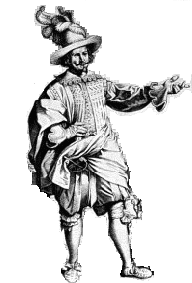
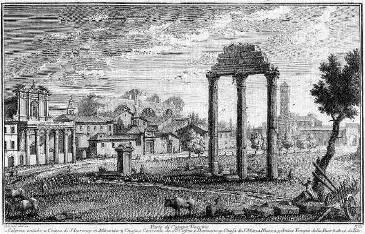
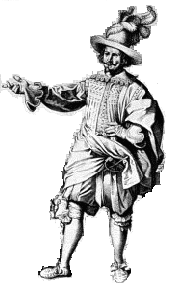



Rome as a Living Museum
Proff. Irene Baldriga and Pier Paolo Racioppi
IES SPRING SEMESTER 2008
Syllabus
Part I - Part II - Part III - Part IV - Part V
Part VI - Part VII - Part VIII - Part IX
Readings - Further Information
Part I. Introduction to the course. Rome and the Antique: changing attitudes via-à-vis the Past.
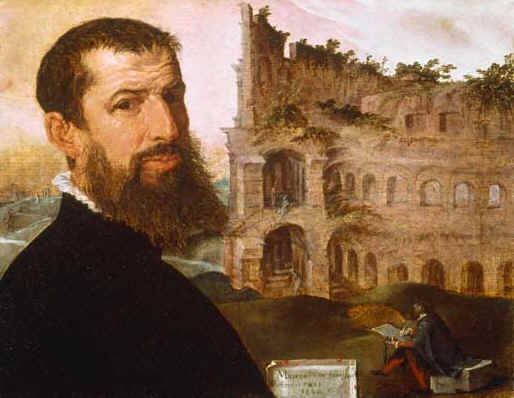
The historical background of the ideological and
cultural weave in the link between antiquities and the city of Rome.
General introduction to the critical issues and art historical methods
which will constitute the backbone of the course. A particular attention
will be given to the “difficult” presence of the Antique as an
absolute model of beauty and as a sometimes heavy burden to be carried
by administrators and citizens. Discussion on the uniqueness of Rome, as
the archaeological city par excellence and as a living and active
modern city engaged in a never-stopping growing process. Presentation
and discussion of the “meaning” of the Antique, in its many forms
and interpretations. Propaganda and the Antique: from Renaissance and
Baroque Popes, to Napoleon, to Mussolini. Introduction to the issues of
conservation and legislation pertaining the city of Rome since the
Renaissance. Iconographic and literary introduction to the “magic”
of Rome and to the dreams and imaginary dimensions it often inspired.
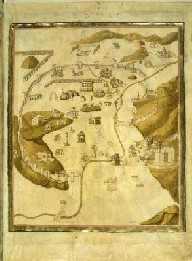
Dealing with “material past”, changing its shape and functions. Different meaning attributed to the Antique over the centuries: from the medieval embarassment of a pagan past to the enchanted investigation of the Renaissance (Raphael’s letter to Pope Leo X). Birth of a conservative attitude towards the past. “Use” and “re-use” of the Antique during the Baroque. Illuminism and the Grand Tour: archaelogical excavations and literary dreams.
Part III. Private and public collections.
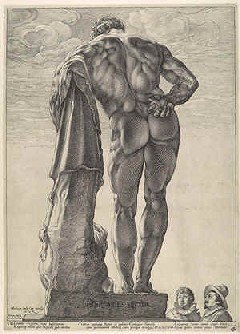
Collecting the Antique. From the “ideal museum” to “real collecting”. The birth of Museums: private and public purposes. Dealing with the Roman antiquities: famous collections in XVIth and XVIIth century Rome. Major examples: the Giustianiani Collection and the Galleria Giustianiana; the Farnese Collection. The Museo Cartaceo by Cassiano dal Pozzo: documenting the past. Popes as Collectors: the Musei Capitolini and the Museo Pio Clementino. From self-celebrating collectors to conservative collectors.
Part IV. Urbanistic changes in Rome
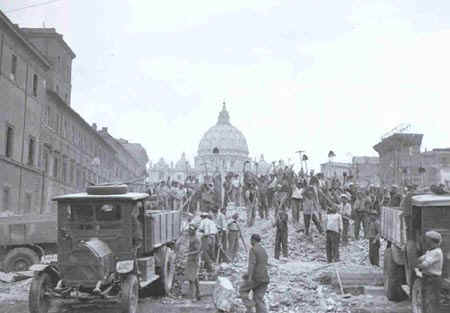
Shaping the city to the willing of Rulers. Changing the meaning of the past on the basis of modern patterns. Urbanistic and Propaganda from Papal Rome, to Napoleon and Mussolini. An analysis of the major changes made to the City under the boost of modern political needs. Benefits and dangers of politics dealing with the Antique. Excavations and disasters. Reading the appearance of modern Rome.
Part V. Rome and its international glamour
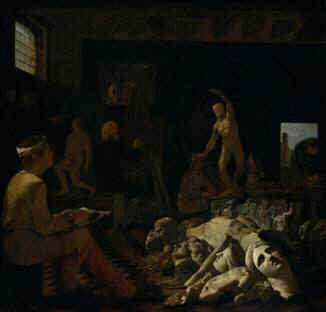
Baldriga: Foreign artists in Rome. From Renaissance to Late Baroque, the myth of Rome as an open air museum. Looking for models: learning from the “vivid past”. Flemish and Dutch masters in Rome during the XVIth and XVIIth century (Heemskerck and the “Romanists”; Lastman, Carel van Mander, Rubens, the Caravaggist movement). Lord Arundel in Rome: looking for precious souvenirs and financing excavations. David and the Giustiniani Collection.
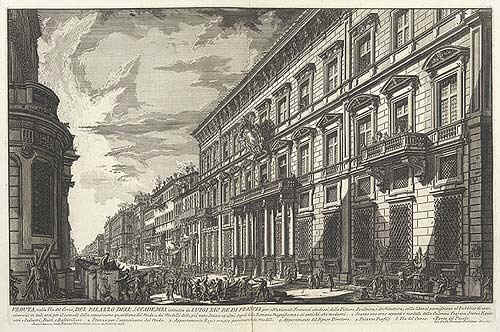
Racioppi:
studying the arts in the city of Rome. The role played by Academies.
Origins and development of the Grand Tour: main characters. Quatremère
de Quincy and the Lettres à Miranda: the concern for the
preservation of the past. The dark side of European collecting: the
ghost of dispersion.
Part VI. Artistic products of the image of Rome for the international market
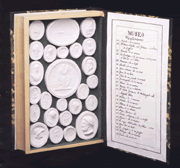
Economical
aspects involved by the Grand Tour phenomenon. Reproducing the image of
Rome. Birth of the artistic market. Production of prints and
“vedute”. Sharing the beauty at a low price.
Part VII. Legislation, State and Private Funding
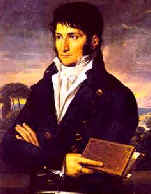
A
history of the first laws for the preservation and protection of the
arts after Napoleon. From the Doria Edict (1802) to the Pacca Edict
(1820). The selection of works of art to be protected: the concept of
prevention. The engagement of Antonio Canova in the issue of artistic
conservation.
Part VIII. Looking at present time: laws, excavation and preservation issues in the city of Rome

A
discussion on the present situation in the city of Rome with regards to
the latest attempts of preservation and excavations. Some exemplary
cases: the Ara Pacis.
Part IX. Final Discussion (co-teaching)
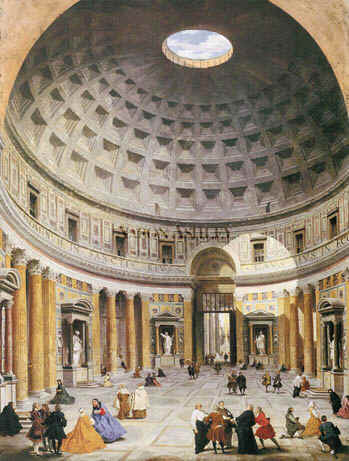
Required Readings.
Rome.
Art and Archaeology
(ed. by Andrea Augenti), Scala Group, Firenze 2003 (selected chapters).
Suggested Readings.
Christopher M.S. Johns, “The Entrepôt of Europe: Rome in the Eighteenth Century” in Art in Rome in the Eighteenth Century, catalogue of the exhibition in Philadelphia Museum of Art, 2000, pp. 17-45
John Pinto, “Architecture and Urbanism” in Art in Rome in the Eighteenth Century, catalogue of the exhibition in Philadelphia Museum of Art, 2000, pp. 113-155.
Rudolf Wittkower, Art and Architecture in Italy: 1600 to 1750, Penguin Books, Harmondsworth, only the pages about Rome: from Pope Sisto V to Paolo V 1585-1621.
David Lowentahal and Marcus Binney (edited by), Our Past Before Us. Why do we Save It?, Temple Smith, London, 1981.
Carolyn Springer, The Marble Wilderness. Ruins and Representation in Italian Romanticism 1775-1850, Cambridge University Press, Cambridge 1987.
Christopher M.S. Johns, "This Great Cavern of Stolen Goods: Canova and the Repatriation of the Papal Collections from Paris in 1815”, the 7th chapter from Antonio Canova and the Politics of Patronage in Revolutionary and Napoleonic Europe, University of California Press, Berkeley, Los Angeles, London, 1998.
Jeffrey Collins, “The Gods' Abode: Pius VI and the Invention of the Vatican Museum” in Clare Hornsby -edited by-, The Impact of Italy, The British School of Rome, London 2000, pp.173-193.
Jeffrey Collins, “Obelisk as Artifacts in Early Modern Rome: Collecting the Ultimate Antiques” in Ricerche di storia dell'arte (magazine), 2000, n. 72, pp. 49-68.
Antiquity
and its Interpreters,
edited by A. Payne, A. Kuttner, R. Smick, Cambridge University Press,
2000.
N. Stanley Price (ed), Historical and Philosophical issues in the Conservation of Cultural Heritage, Getty Center for Education in the Arts, 1996.
A.M. Tung, Preserving the World's Great cities: the destruction and renewal of the historic metropolis, Clarkson Potter Publishers, New York 2001 (chapters on Rome).
A. Notaro, "Resurrecting an imperial past: strategies of self-representation and 'masquerade' in Fascist Rome (1934-1938)" in Hieroglyphics of Space-Reading and experiencing in modern metropolis, ed. by N. Leach.
Method of
presentation: the course will
be cotaught and will take place partly in class and partly on site. Lectures,
seminar discussions, visits to monuments and sights, slides, use of
multimedia and internet resources (selected by the instructors).
Course
format:
since the work of art will be the central focus of the course, classes
will be held – partly – in situ (see the list of visits below).
Instructors will articulate the course in the co-teaching format and in
separate lectures as well, by sharing topics and issues on the basis of
a precise schedule.
Class
time: TBA
Required
work and form of assessment:
Class attendance and participation (20%); class presentation (25%);
midterm (25%); final exam (30%). Final exams will be based on both the
course lectures and the assigned readings.
Grading:
the final grade will be based on the exams, attendance and class
participation (which requires not only that students attend class but
that they directly contribute to the presentation of topics concerning
the course). Oral presentations will be required, especially on the
occasion of the field trips.
Format
of the exams:
Mid-term and Final exams will consist of multiple choice questions; true/false
questions; short answers. The results of the mid-term and of the
research papers (if possible also the final) will be discussed privately.
Pre-requisites: The course is a 320 level. Students are required to have at least general idea of the art historical method and a general knowledge of the main artistic periods and phenomena (Roman Art, the Middle Ages, the Renaissance and Baroque). Newers to the art historical field are welcome, but they must be aware that an additional effort will be asked to them in order to acquire the very basic tools of the subject. Additional readings might be necessary to them. The course is not a general survey on Rome and its cultural heritage nor even an elementary presentation of its monuments and works of art.